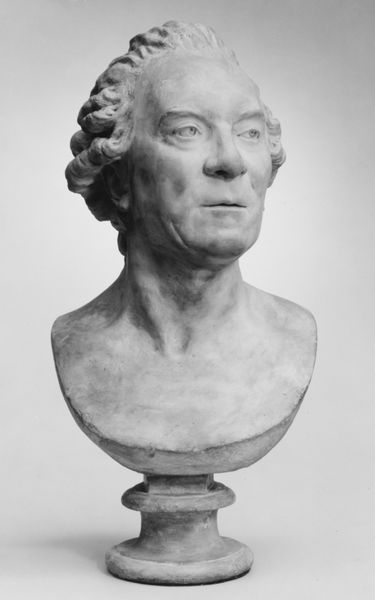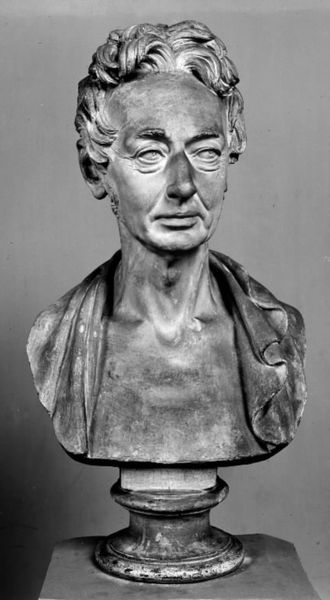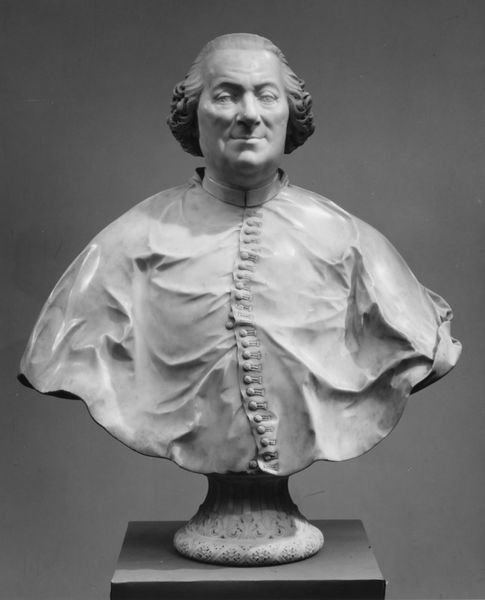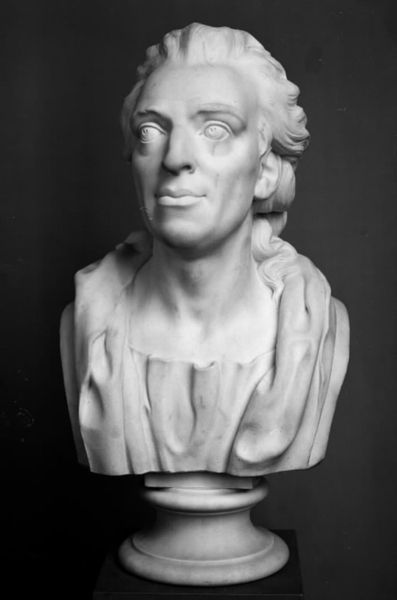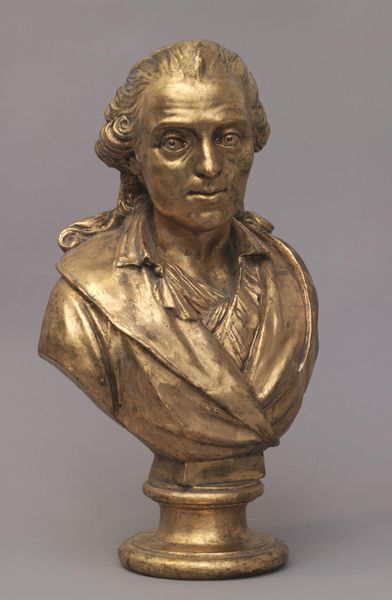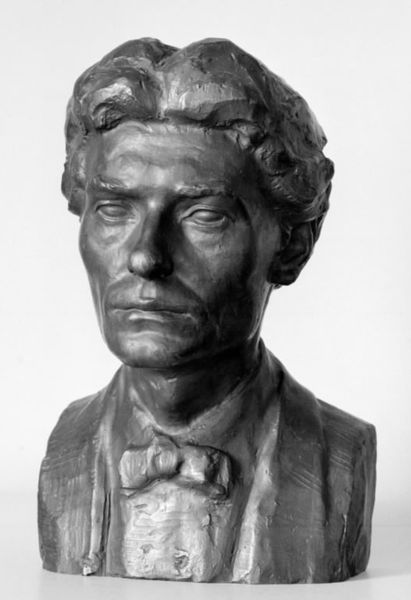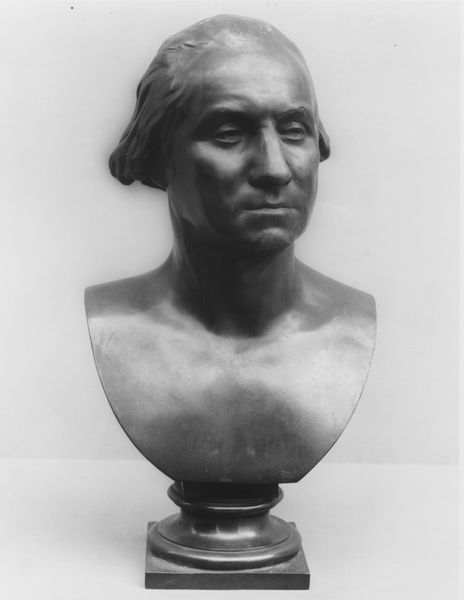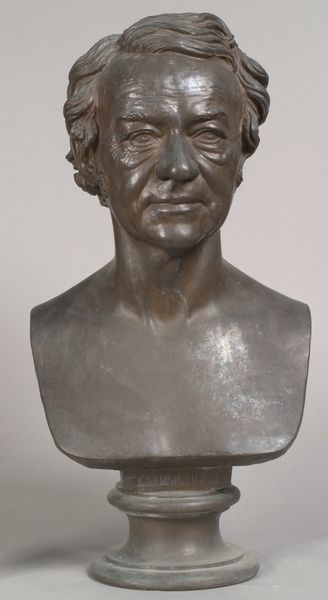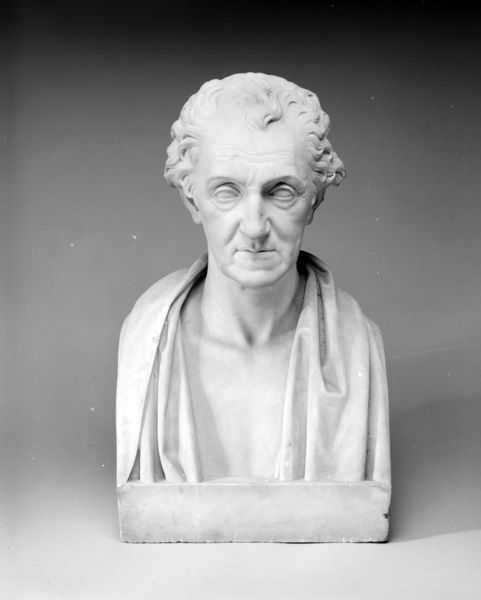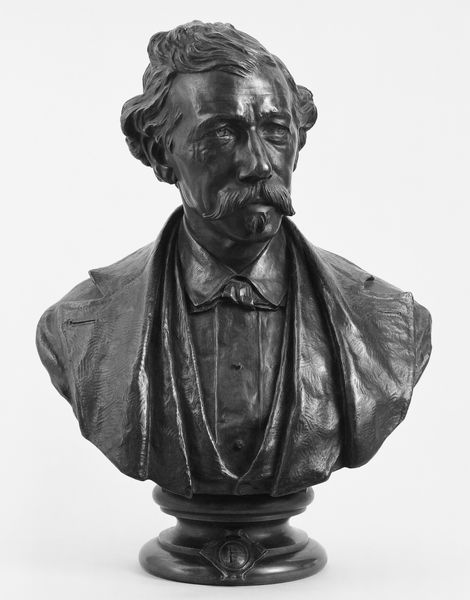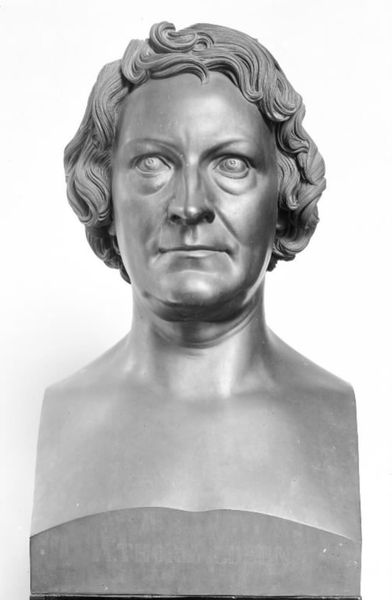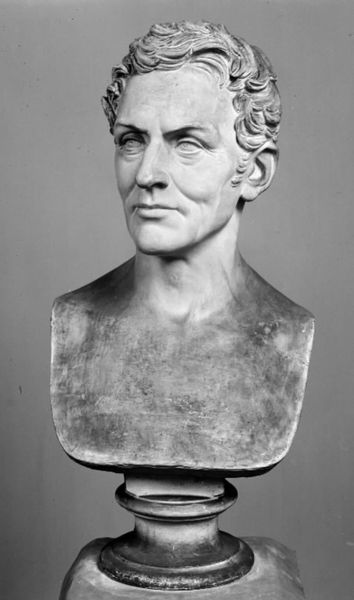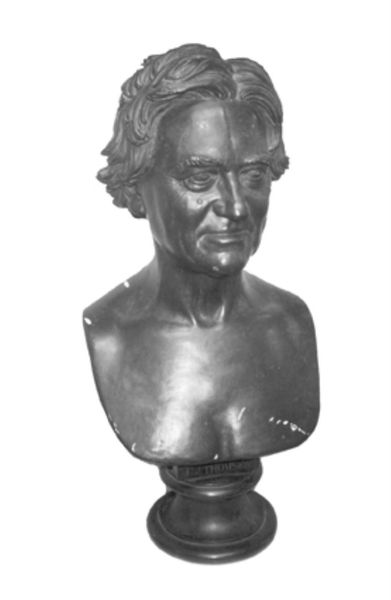
Dimensions: Height (with socle): 29 in. (73.7 cm)
Copyright: Public Domain
Curator: Augustin Pajou sculpted this marble bust of Pierre Fran\u00e7ois Basan between 1900 and 1941. It now resides at the Metropolitan Museum of Art. What strikes you most about it? Editor: The expression. There’s an intense gaze that conveys intelligence and perhaps a touch of cynicism. I sense the complexities of a man deeply engaged with his world. Curator: The use of marble is particularly interesting here. Pajou masterfully rendered the textures of fabric, hair, and skin. We must remember the labor involved in extracting, transporting, and carving this material; each mark, each contour represents hours of skilled craftsmanship. It certainly elevates Basan in stature. Editor: Absolutely. Considering the period—overlapping Neoclassicism—portraiture was used to communicate not only likeness but also status and character. I wonder how Basan's profession, perhaps his political leanings, shaped Pajou's artistic decisions. Were they allies in some way, artistically or politically? Curator: That's insightful. Examining the folds of the drapery, you see the technical skill needed to carve what appears fluid and natural from a solid material. The collar's open, suggestive of informality, yet everything—the curl of his hair, the set of his jaw—is meticulously planned. Editor: Yes, and that tension speaks volumes about identity, performance, and the construction of the self during that time. Also, what does it say about who was commissioned for portraits? What messages are being subtly communicated about power, privilege, and societal expectations? Curator: Focusing on materiality and labor invites questioning the traditional art hierarchy, because even seemingly high-minded artworks rely on material extraction and manual labor. These processes often reflect the social and economic power dynamics of a given time. Editor: Looking at this piece, I see the careful marriage of craft and ideology. Examining who gets immortalized in marble forces a critical conversation about historical narratives and whose stories are deemed worthy of preservation. Curator: Precisely. Seeing these materials not merely as art supplies, but as products of social systems, enriches our understanding of the piece and its cultural moment. Editor: Indeed. It’s through these intersectional lenses—materiality, identity, power—that the bust of Basan transforms from a simple likeness into a mirror reflecting complex socio-historical forces.
Comments
No comments
Be the first to comment and join the conversation on the ultimate creative platform.
